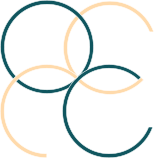At Oregon Cosmetic and Reconstructive Clinic, we perform breast lift surgery (mastopexy) to achieves more youthful-looking breasts. Whether due to aging, weight changes, pregnancy, or genetics, breasts commonly sag over time. Dr. Tina Jenq provides expert care and personalized treatment to enhance breast shape and position. We also proudly serve Portland, Lake Oswego, Clackamas, Gresham, West Linn, and beyond.
What is Breast Lift Surgery?
Breast lift surgery, or mastopexy, is a procedure that raises and reshapes sagging breasts by removing excess skin and tightening the surrounding tissue. In addition, the surgery repositions the nipples for a more youthful and proportionate appearance.
Reasons for Breast Lift Surgery
- Breast Sagging (Ptosis) – Reposition loose skin from aging, pregnancy, or weight fluctuations.
- Nipple Positioning – Elevate nipples pointing downward.
- Uneven Breasts – Correct asymmetry for a more balanced proportion.
- Enhancing Breast Profile – Restore a more youthful breast shape.
- Wide Flattened Shape – Tighten excess skin that reaches into the armpit area

Breast Lift Techniques
- Crescent Lift – A minimal lift for mild sagging.
- Peri-Areolar (Donut) Lift – For moderate sagging and nipple repositioning.
- Vertical (Lollipop) Lift – For moderate to severe sagging, removing excess skin.
- Anchor Lift – For significant sagging, creating a dramatic lift and reshaping.
What to Expect from Breast Lift Portland
- Consultation – Dr. Tina Jenq discusses your goals with you after an examination to determine the best approach.
- Surgery – Same day surgery performed under general anesthesia with expert precision and care.
- Recovery – Our patients heal usually in about 2 weeks, with continued improvement over several months.
- Results – Feel confident with rejuvenated, youthful appearance.
How Much Does a Breast Lift Cost in Portland Metro?
Oregon Cosmetic and Reconstructive Clinic, the average cost of a self pay breast lift surgery is approximately $8758.
What’s Included in the Price?
- Board-certified plastic surgeon’s fee
- Anesthesia costs
- Surgery facility fee
What Can Affect the Final Price?
- The complexity of the procedure
- Your anatomy and goals
- Any customized surgical approach needed
We provided a personalized quote after your consultation, based upon your specific treatment plan.
What Sets Our Practice Apart
Choosing a surgeon is an important decision—and we believe you deserve to know who will be performing your procedure. At our clinic, Dr. Jenq performs every part of the surgery herself, from start to finish. Unlike some practices where surgical tasks may be delegated to trainees, residents, or surgical technicians, your care will never be passed off to someone else. This direct attention not only supports safety and consistency but ensures that your experience is truly individualized.
Another key benefit of our approach is that we do not use surgical drains. Many patients are relieved to learn this, as drains can be uncomfortable and can prolong recovery. With advanced quilting suture techniques, Dr. Jenq minimizes fluid buildup to support a smoother healing process—without the need for external drains.
Additionally, all of our surgeries are performed as outpatient procedures, meaning you’ll go home the same day. Most surgeries are completed in three hours, and patients can typically return to light daily activities within a week. We understand the importance of clear recovery expectations and are here to support you through every phase.
Schedule Your Breast Lift Portland Consultation Today
If you’re considering breast lift in the Portland Metro region, trust Dr. Tina Jenq at Oregon Cosmetic and Reconstructive Clinic. Contact us today to schedule a confidential consultation and explore your options for a more youthful breast appearance. Also, for more information about breast lift procedures, visit the American Society of Plastic Surgeons.

